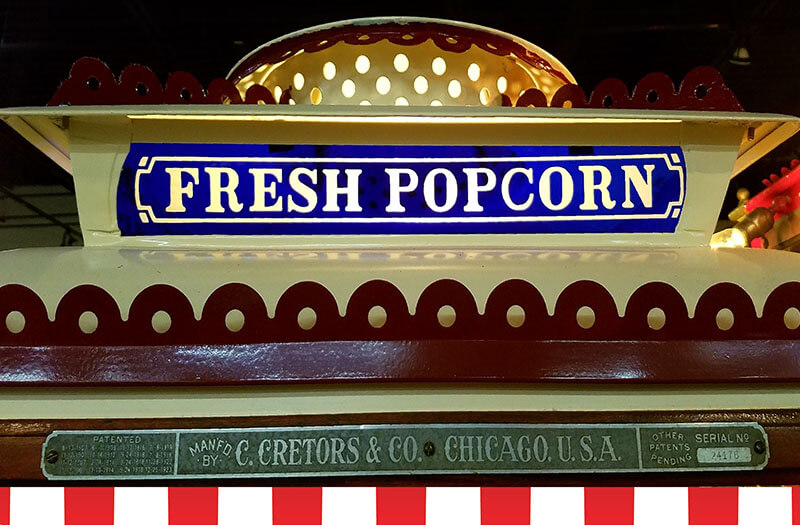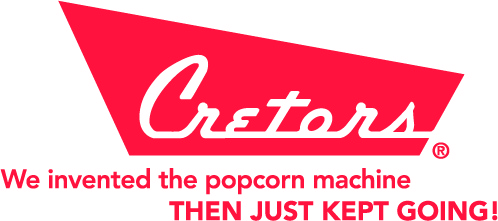Our History
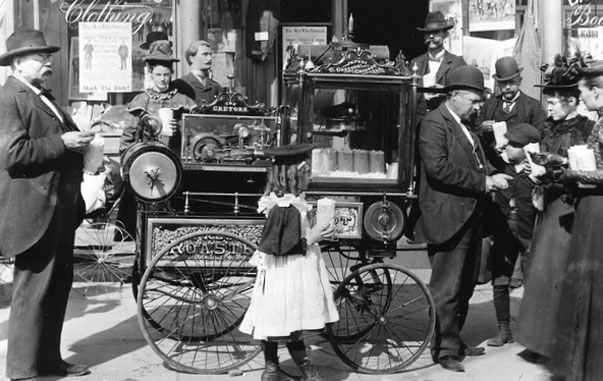
An Age of Invention
1885-1912
Charles Cretors’ imagination led to an invention, the first commercial popcorn machine. That invention brought innovations that led to an industry. An era of invention on the coattails of the Industrial Age ushered in the Cretors’ steam powered popcorn popper and peanut roaster introduced at the World’s Fair of 1893. The Wright Brothers first flight, Henry Ford’s Model T, the advent of electricity – C. Cretors & Company was in good company in its first decades. Next came more poppers, wagons and the first counter models, as well as popcorn oil for a better taste. Skilled engineering labor helped set Cretors apart as the company trusted for quality.

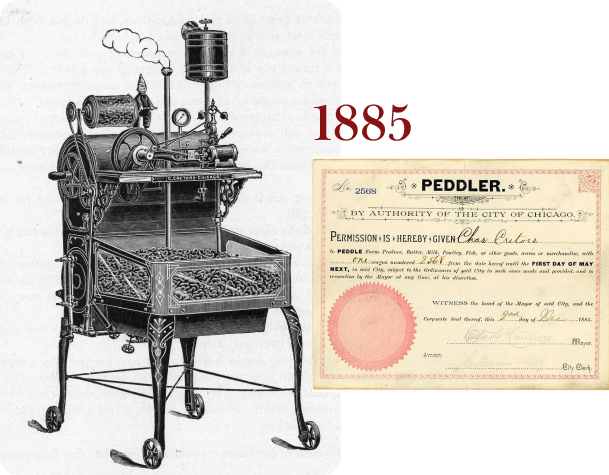
On December 2, 1885, Charles secured a peddler’s license and placed his machine on the sidewalk in front of his shop. It roasted snacks, turned heads, and marked the official beginning of C. Cretors and Company.
With the help of J.M. Savage, a traveling salesman who became the company's first official sales representative, word spread quickly. What began as one man’s inventive spirit sparked a new industry—and laid the foundation for a company that has thrived across three centuries of innovation, craftsmanship, and concession excellence.
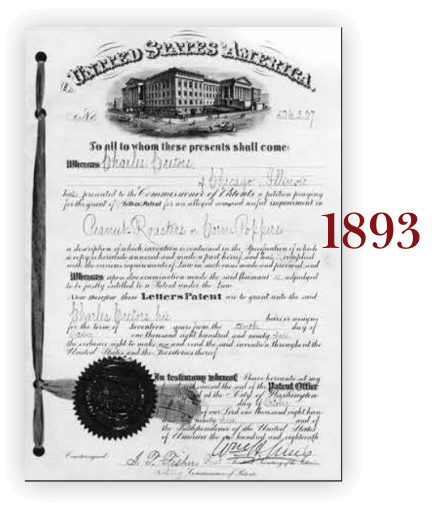
Cretors applied for a patent in 1891 for his corn popper and peanut roaster, which was officially granted in 1893. This was also the same year of The Columbian Exposition situated on Chicago’s lakefront. The World’s Fair welcomed millions of visitors and showcased exhibits from countries around the world. It was a celebration of American innovation—and the perfect stage for Charles Cretors to debut his revolutionary steam-powered popcorn machine on the Midway Plaisance. That moment marked the beginning of C. Cretors & Company’s long—and still growing—legacy in the concession industry.

In a sign of growing international interest, Cretors exported its first machine abroad in 1897: a Model No.1 Wagon sold to the Netherlands’ Gist and Spiritus Fabriek in Delft for $400. It is still owned and on display at the successor company, Unilever.
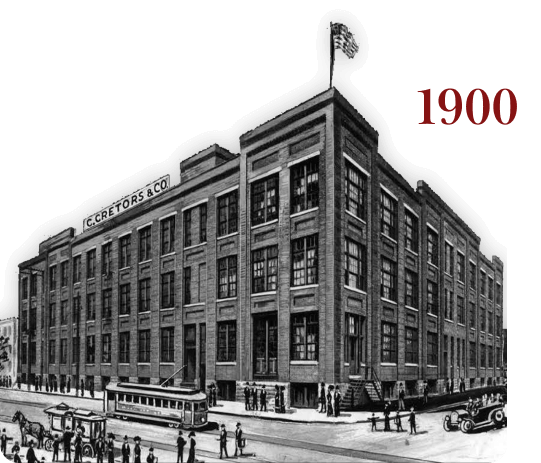
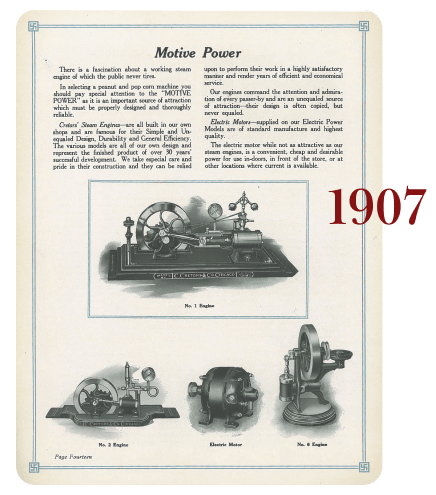
Charles Cretors recognized this shift and responded with electric machines designed for performance, reliability, and profitability. In 1907, Charles and his son, Hazael DeWitt, received a patent for converting steam-powered equipment to run on an electric motor.
That same year, the company introduced its first No. 3 peanut roaster and corn popper powered by electricity, marking a significant step forward in concession equipment and reinforcing Cretors’ reputation for innovation.
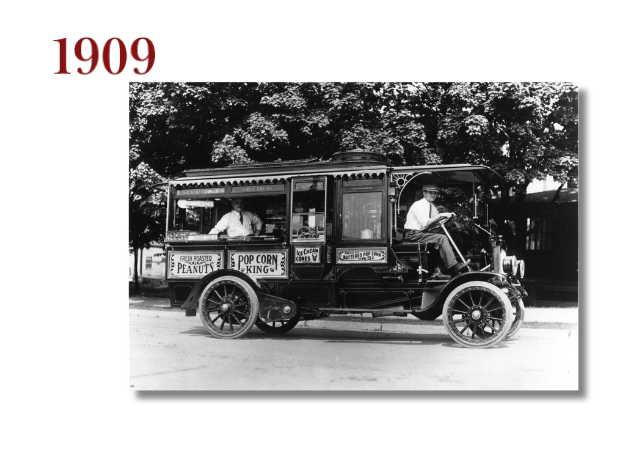
The Buda engine, widely favored by early truck manufacturers, allowed Cretors to design larger wagons with greater range and flexibility. Outfitted to sell popcorn, peanuts, candy, and soda, these vehicles weren’t just eye-catching—they were the very first mobile concession stands ever known.
Later models, known as Automobile Wagons, were built on Model T and Model AA Ford chassis, blending style with function.
In 1909, Mrs. L.P. Dupoyster of Cairo, Illinois, made history as the first buyer of a Cretors automobile model, purchasing it for $1,850. Her investment helped usher in a new era of mobile snacking and on-the-go indulgence—an idea that would inspire generations to come.
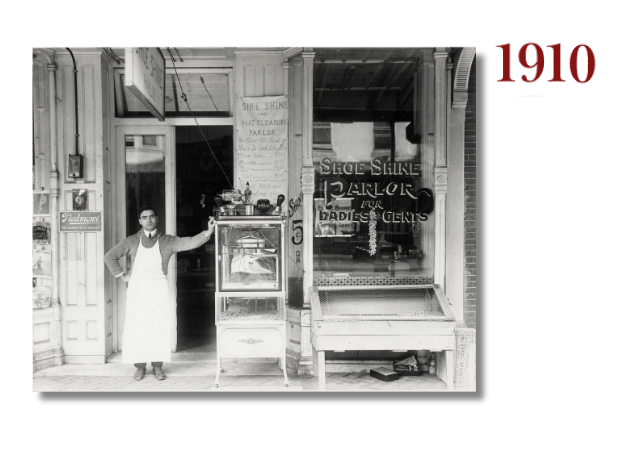
C. Cretors & Co. holds one of the oldest active Underwriters Laboratories (UL) certifications ever issued for a machine powered by an electric motor—a lasting testament to the company’s commitment to quality, safety, and forward-thinking design.
1913-1939
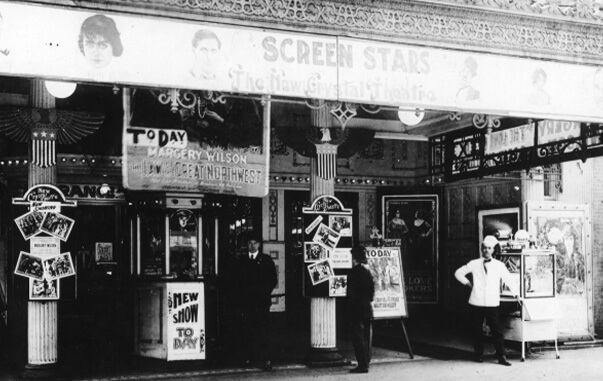
Movie Madness
1913-1939
Charles Cretors patented a popper powered by electricity before it was a commonplace convenience, let alone a necessity. It would help secure Cretors’ position in early movie theaters popping up across the American landscape. A complete line of supplies followed: corn, seasoning, boxes and bags as well as critical safety features. With the advent of talkies, movie concessions moved indoors. As the Great Depression ravaged the global economy, movies provided a much-needed escape. Increased attendance provided extra concession profits from popcorn machines and helped theaters stay in business. Cretors continued to lead the way. Hazael D. Cretors, son of Charles, became president in 1934 and revolutionized the company’s marketing materials during the heyday of catalog shopping. He helped tell and sell Cretors, while keeping the company afloat through the Great Depression. Bookended by two World Wars, this was an era of great change in America, and a time of continued innovation and leadership by Cretors.

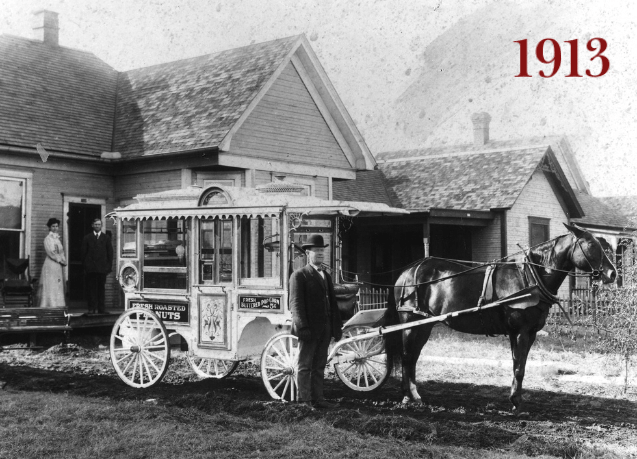
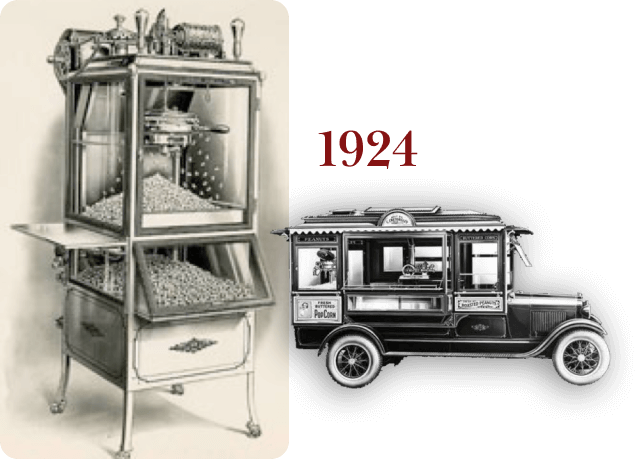
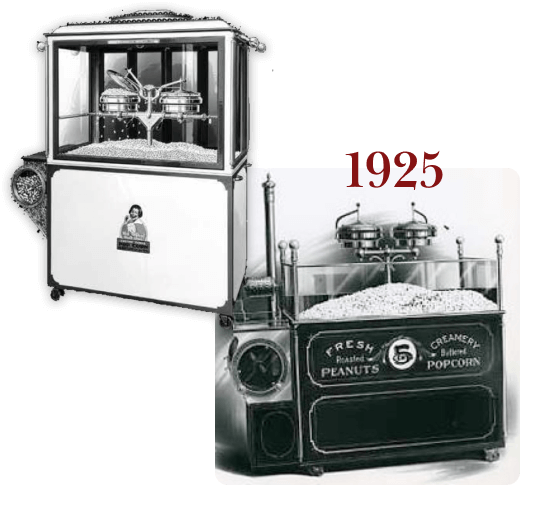
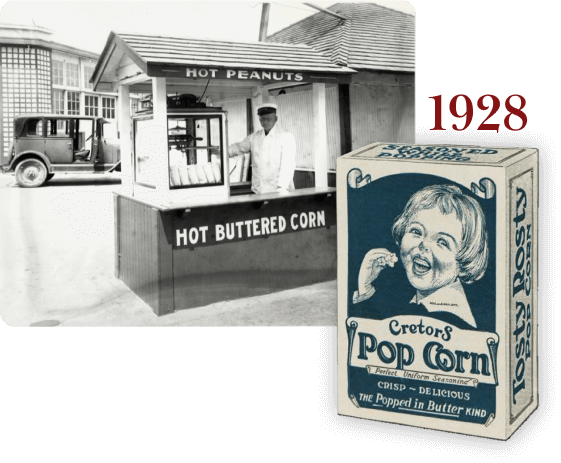
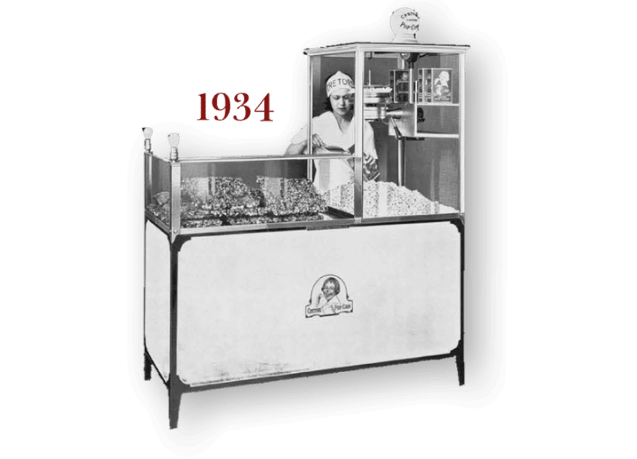
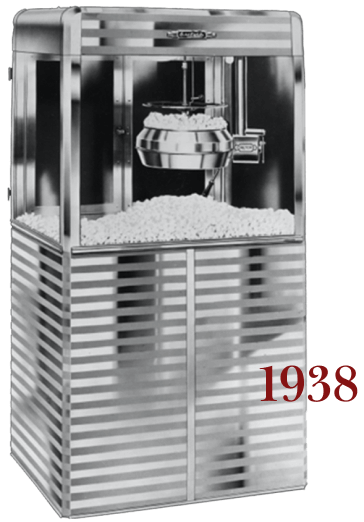
1931-1950
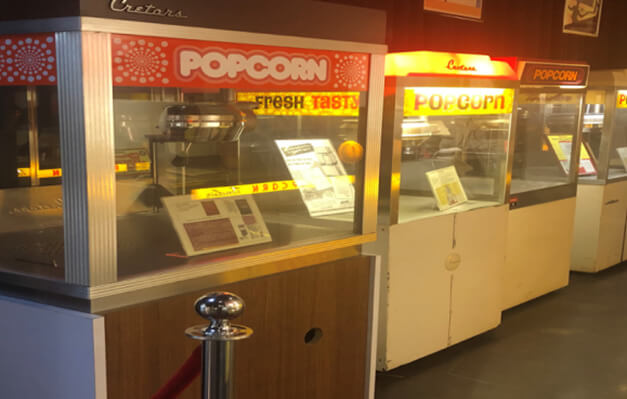
Modern America
1940-1969
The early 1940s brought big changes as America entered World War II. Under the War Production Board's L-65 order, Cretors shifted from making popcorn machines to producing aircraft oil line fittings, radio components, and jack floats for anti-aircraft guns. Led by new president Charles J. Cretors, the company proudly supported the war effort.
After the war, the rise of television challenged movie theaters, but innovations like drive-ins and color films kept audiences returning. Cretors adapted once again, expanding into new markets, launching new designs, and opening a sales office in Nashville. In 1967, the company introduced its patented Flo-Thru® system, a breakthrough in high-volume popcorn production using continuous hot-air technology.

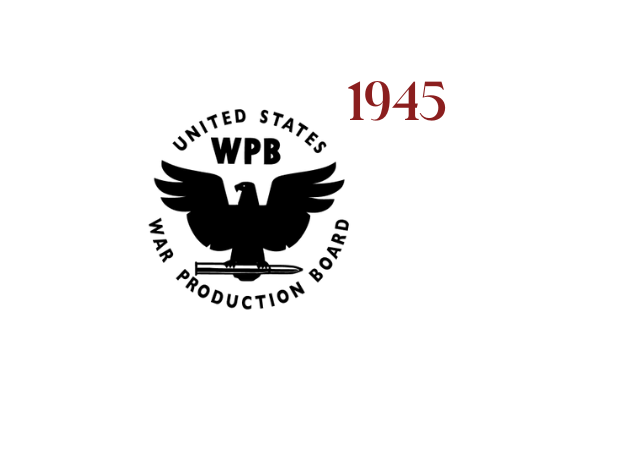
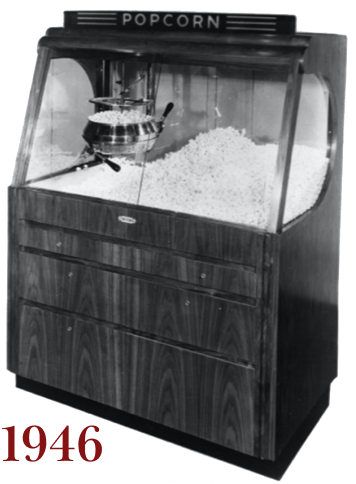
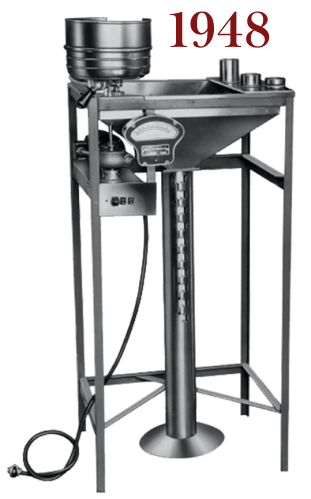

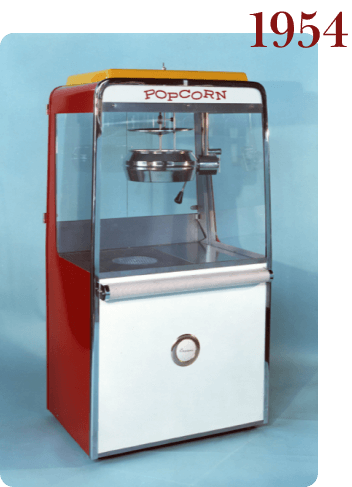
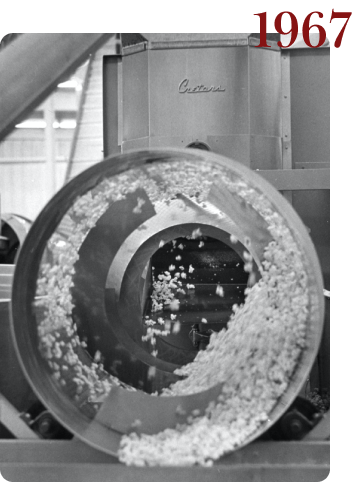
1970-1999
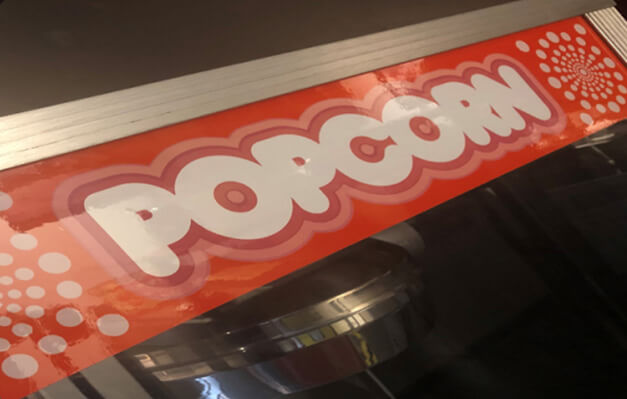
The Dawn of Digital
1970-1999
While the Counterculture challenged social structures, Cretors company culture remained committed to engineering excellence and smart business, even as the world economic and political landscapes changed. The Berlin Wall fell, followed soon after by the entire Soviet Union. The Internet was born, fundamentally changing society, the economy and the ways business did business.
Under Charles D. Cretors, who becomes president in 1974, focus continues on the Flo-Thru® business and on features and options to improve concessions machines, like the Bag-In-Box oil pump and larger kettle sizes. The company moves to North Racine Avenue and then to North California Avenue and relocates the sales department from Nashville to Chicago. In less than a decade multiplexes booms and slows. And through it all, Cretors persevered.

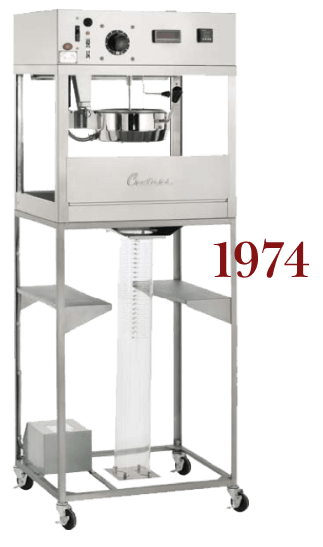
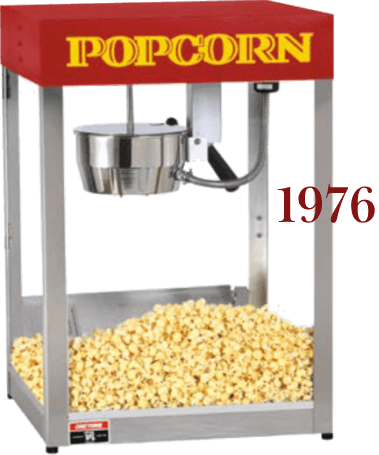
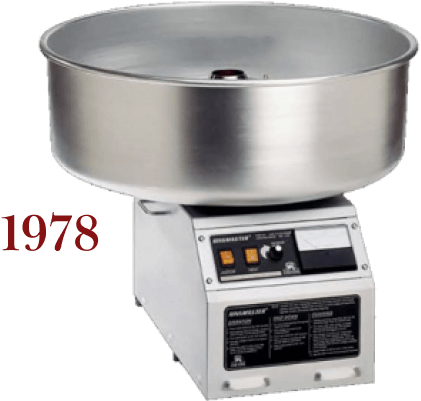
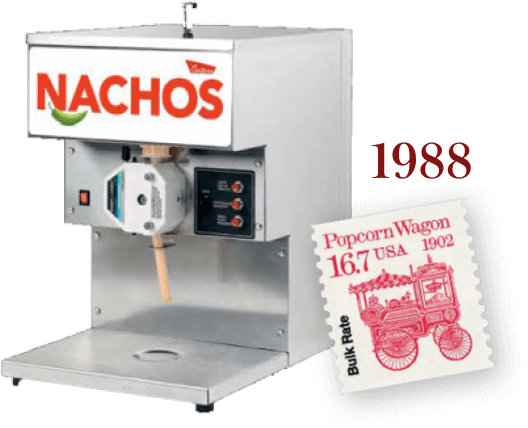
In response to growing demand in the new industries, Cretors expandes its product line to include Nacho Equipment—introducing a patented Nacho Cheese Pump and a range of Nacho Chip Warmers designed to meet the needs of emerging snack trends and evolving customer preferences.
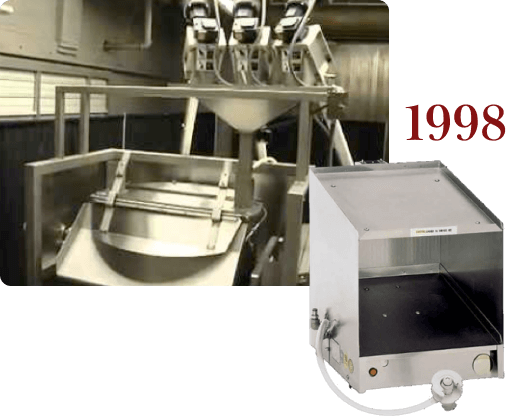
The G-Zilla popper is developed and added to the Cretors Industrial product line as a high-capacity wet-popping kettle, capable of producing up to 250 pounds (113 kg) of popcorn per hour—one of the largest in the industry. Designed for high-volume snack food production, the G-Zilla delivers exceptional efficiency and output for large-scale operations.
2000, Today & Tomorrow
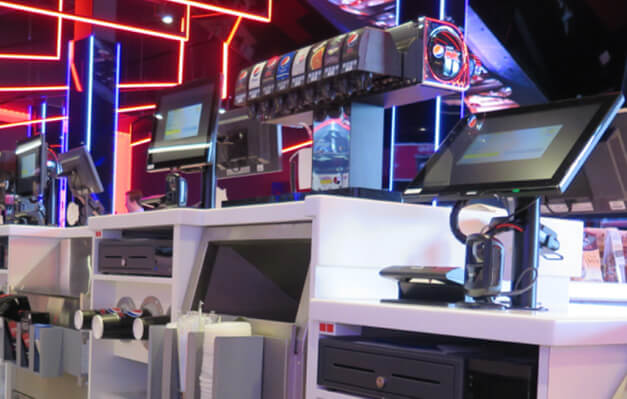
today and tomorrow
2000's & Beyond
The Tech Bubble and attacks of September 11 led to an unstable start to the new millennium. Yet Cretors continued to innovate by introducing new hot dog, caramelizing and pizza equipment while expanding warming cabinet options and topping and dispensing systems. Options and features like the PopIt N’ TopIt, Roc N’ Roll and One Pop were all introduced, allowing buyers to customize machines for their needs. Likewise, the food processing unit continued to grow with Flo-Thru® performing as well as Cretors commercial machines sales. The fifth company president, Andrew G. Cretors, took the helm in 2006. In 2014, Cretors moved to the state-of-the-art 101,000 square foot facility to Wood Dale, IL. Whether looking at the historic poppers or looking into the Innovation Lab, you’ll see that Cretors is a company that innovates and endures, responding to and adapting to cultural change, economic shifts and the global landscape.

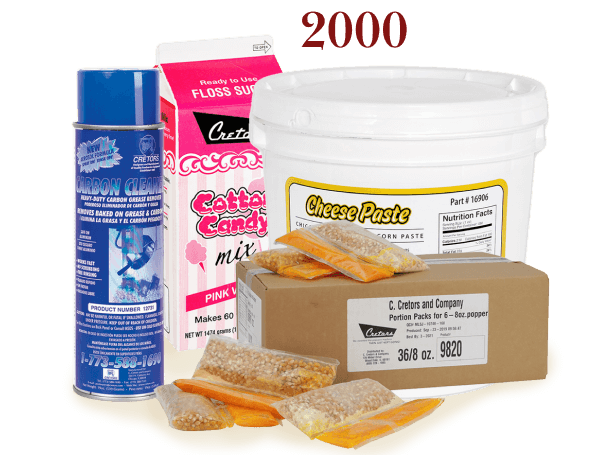
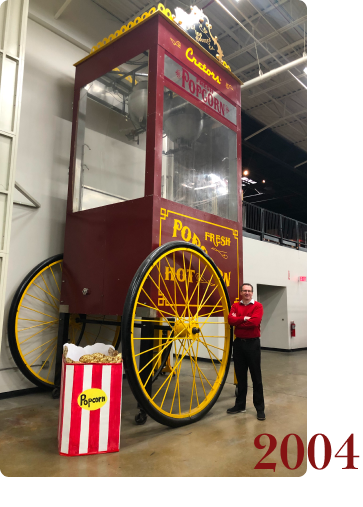
To lend credibility, producers asked Charlie Cretors to evaluate the build. When a fabricator was dismissed on day two, Charlie joined the team—unbeknownst to them, he was a trained engineer who had grown up in the Cretors shop and had designed the original Profiteer machine.
After the show wrapped, Cretors Co. purchased the oversized machine and brought it to their Chicago facility. This accomplishment is later recognized by the Guiness Book of World Records for being the world’s largest popcorn machine.


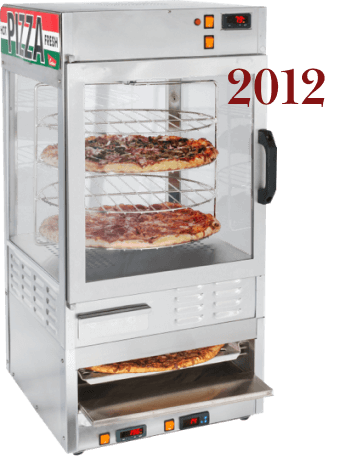
Poppi, the industry’s first compact, industrial countertop hot air popper, is designed and patented—bringing in a new era of oil-free popping technology for gourmet popcorn shops and other retail locations seeking a high-performance, oil-free solution. A few years later, the innovation continued with the debut of Poppi XL, offering increased capacity and efficiency for high-volume environments.
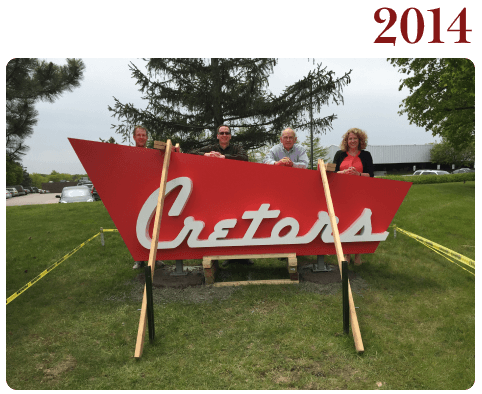
The patented Double Feature machine is added to the product line—an industry first that combines a popper and caramelizer in one unit. With fewer machines to operate and clean, customers can produce high-quality caramel popcorn faster and with less effort, all within a compact footprint—boosting productivity and profit.



Coming to the Chicago Area? Contact Us About a Tour of our Museum!
